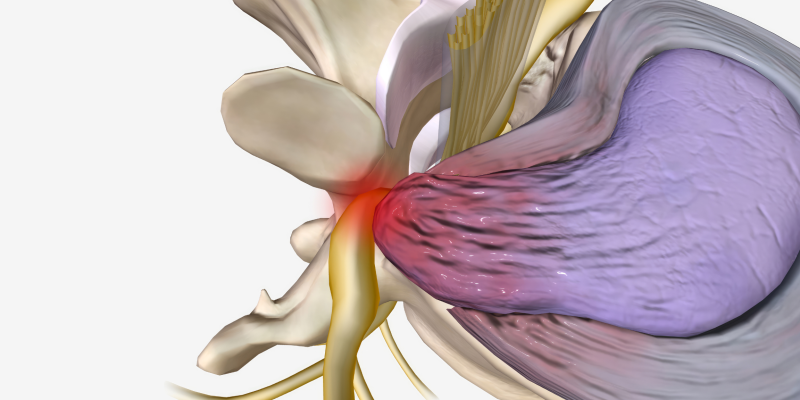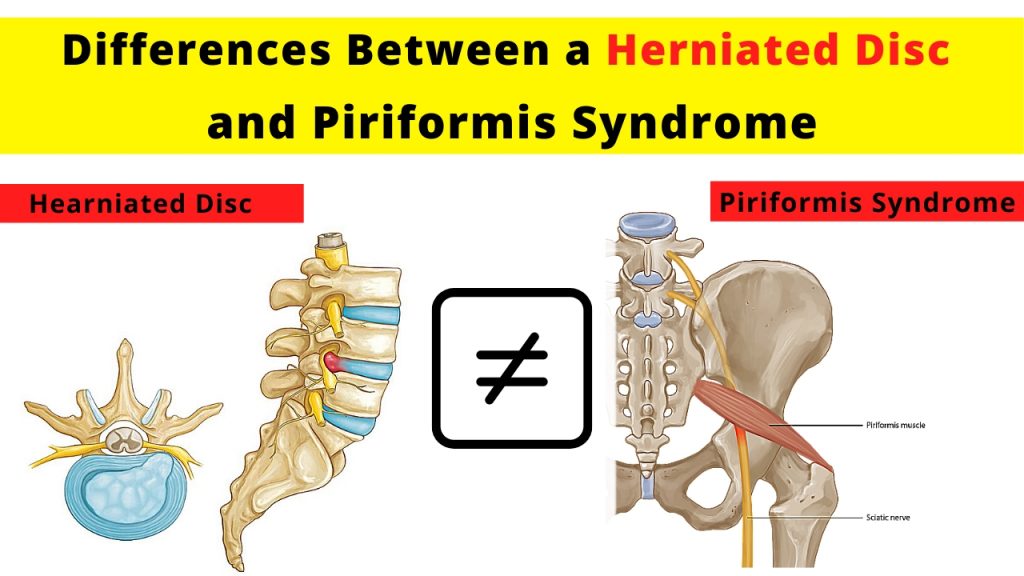A herniated lumbar disc is a displacement of intervertebral disc material (nucleus pulposus or annulus fibrosis) beyond the intervertebral disc space. In addition, the highest prevalence is among people aged 30-50 years, with a male to female ratio of 2:1. (Read More) A herniated disk, which can occur in any part of the spine, can irritate a nearby nerve. Depending on where the herniated disk is, it can result in pain, numbness, or weakness in an arm or leg.
In this article, I have answered 10 common questions that you have asked me in the previous video about the best exercise routine for L4 – L5 / L5 – S1 Disc Bulge pain relief. Make sure to watch this video until the end, and feel free to ask me any questions.
1- Does disc bulges heal? Watch the video: 1:18
This is one of the most common questions that many of my patients ask me. Many of them are not very optimistic about disc bulges and not aware of whether they are going to recover from a disc bulge in time or they will carry this for the lifetime.
What studies shown so far surprisingly is very positive, The “results from a recent meta-analysis have shown two-thirds of herniated discs heal on their own. They have highlighted, ” the conservative treatment may become the first choice of treatment for lumbar disc herniation “.

2- How long does it take for disc bulges to heal? Watch the video: 2:17
The second most common that every patient wants to know about their disc bulge is how long does it take to recover? It’s not realistic to generalize A particular time frame for every patient’s recovery time, since every person has a different background, experience, and beliefs, etc.
The research highlighted Over 85% of patients with symptoms associated with an acute herniated disc will resolve within 8 to 12 weeks without any specific treatments. To give you a bigger insight to understand acute and chronic you may read this article.

3- How long do you need to rest after an acute back injury? Watch the video: 3:03
Having a PLAN regarding your rest and recovery routine can help you to maximize your overall recovery. In many cases, patients are not sure how long they need to rest after an injury and that can be frustrating and in the meantime underproductive.
The study has suggested avoiding prolonged bed rest after a back injury. While you may want to lie down for a while if your back pain is severe, prolonged bed rest may not be a good option to treat your aching back. When you lie down for extended hours and minimize physical activity.
In addition, there is strong evidence that prolonged bed rest does not improve outcomes for patients with back pain (pain, disability, days missed from work, or functional ability). In this randomized controlled trial, the have compared bed rest, exercise, and routine care and it showed that bed rest was associated strongly associated with three negative outcomes (more days off from work, the intensity of pain, and disability) read more.
Further study has shown, prolonged bed rest can lead to muscle atrophy. The extensor and flexor muscles of your spine that aid in forward and backward bending movements become weak and reduce in mass (atrophy). These muscles, especially the erector spinae and multifidus are important stabilizers of your back and help withstand compressive loads (Read more).

4- what is the best exercise for disc bulges? Watch the video: 4:03
Despite the fact that many studies have shown exercise is beneficial for patients with chronic back pain (Read more). Unfortunately, we still don’t have a set of exercises that we could claim as A “BEST EXERCISE” for back pain.
Research has shown, exercise and being active not only can help you to improve your lower back pain, but it also can reduce your chances of getting back pain. They highlighted, “Aerobic exercise can benefit chronic lower back pain as it increases the blood flow and nutrients to the soft tissues in the back, and it is improving the healing process and reducing the stiffness that results in back pain. In addition, they highlighted a low aerobic fitness level is associated with chronic lower back pain (Read more).
You can read more about the effects of aerobic exercises, and how they can act in a similar way to “pain-reducing drugs” such as morphine and codeine here.

5- What is the difference between sciatica and a herniated disc? Watch the video: 5:42
Herniated disc develops when one of the cushion-like pads between the vertebrae moves out of position and presses on adjacent nerves. A herniated disc is a relatively common condition that can occur anywhere along the spine, but most often affects the lower back or neck region. Sign and symptoms: If your herniated disk is in your lower back, you’ll have pain in your lower back and buttocks, thigh, and calf. You might have pain in a part of the foot, as well. You might also, experience a radiating numbness or tingling (Read more).
I have prepared a video that can answer your questions in regards to Herniated disc and Sciatica. You can watch these videos and if you have any questions that I haven’t answer feel free to leave me a comment underneath the video.
6- Do I need an MRI scan if I have acute lower back pain? Watch the video: 6:38
Research has shown acute lower back pain does not need evaluation with any imaging modality (Read more). They specifically highlighted, patients with Radiculopathy that unresponsive to conservative management, or patients only with “Red Flag” symptoms. See the list below.

7- Do I need an MRI scan if I have chronic lower back pain? Watch the video: 7:33

8- How common is disc bulges? Watch the video: 8:38
A systematic review showed, up to 90% of individuals 60 years of age or older. findings of degenerative changes such as disk degeneration, disk signal loss, disk height loss, disk protrusion, facet arthropathy are generally part of the normal aging process rather than pathologic processes requiring intervention such as “Surgery” (Read more).
9- Should I wear a lower back brace to protect my back? Watch the video: 10:03
The short answer is No. I always show my patients why they don’t need to use back braces, or in other words, wearing the braces for a long time. Your back is supported with more than 37 superficial and deep muscles that give you the ability to move in space and bend and flex your body without the need for any support. Besides that, every single vertebra as you can see in the picture below is supported with 5 solid strong ligaments that give you extra stability. However, Watch the video and let me know if you have any question in mind.


10- Do I need to do crunches to have a stronger core? Watch the video: 11:28
Unfortunately, crunches are not strengthening your core. They mostly strengthening your abdominal “Abs” muscles. Your core is a complex series of muscles, extending far beyond your abs and It is incorporated in almost every movement of the human body. These muscles can act as an isometric or dynamic stabilizer for movement, transfer force from one extremity to another, or initiate movement itself (Read more).

I believe with understanding more about disc bulges and how they heal you will have a better chance to recover and improve your symptoms. If you have any questions regarding your back you can ask me through my youtube channel.
Our Approach
Dublin Sports Injury Clinic is a Physical Therapy Clinic based in Pearse Street, Dublin 2. We have a high volume of patients who are treated with low back pain. Initially, our treatment will be focusing on helping our patients to get pain free as quickly as possible. We educate our patients to understand the cause of their back pain and how they can stay pain-free. Our treatment and rehabilitation exercises will be customized for every patient and we show them the correct techniques and progression.
Next step
Want to get in touch with our team of a therapist or you are looking for some advice? Simply fill in your details below & we get in touch with you shortly.
FOLLOW US ON YOUTUBE AND GET ACCESS TO OUR WEEKLY FREE REHABILITATION EXERCISES.

Disclaimer: This article is for information only and should not be used for the diagnosis or treatment of medical conditions. You can contact us if you would like to book an appointment or get some advice from our therapist.

